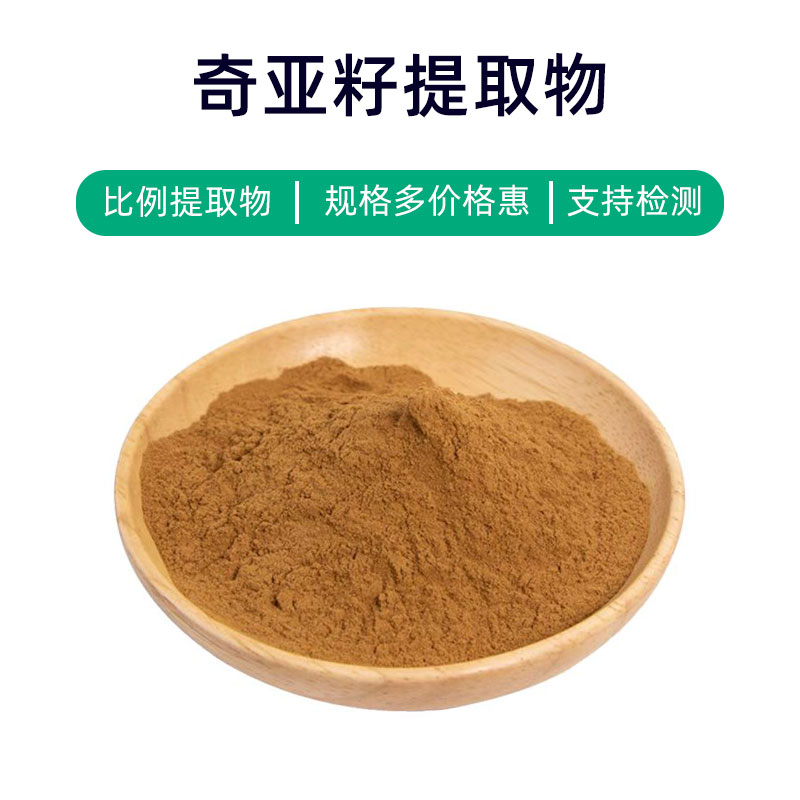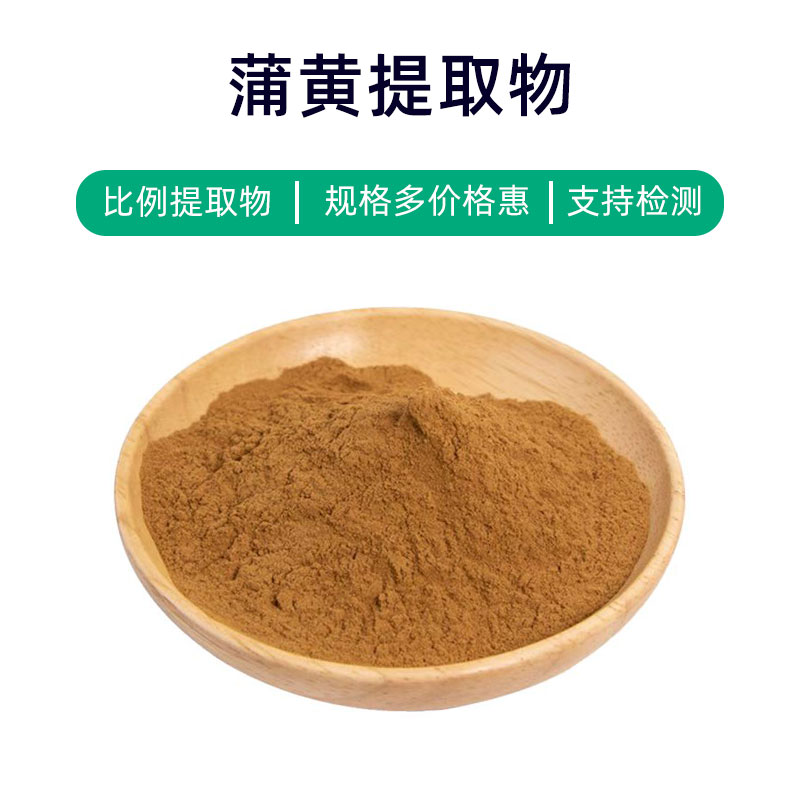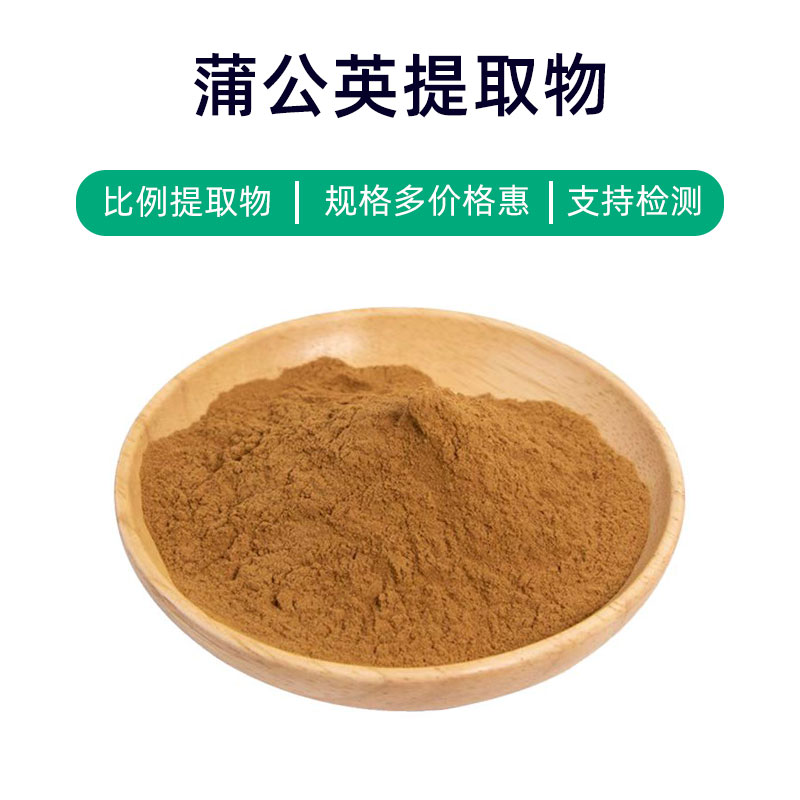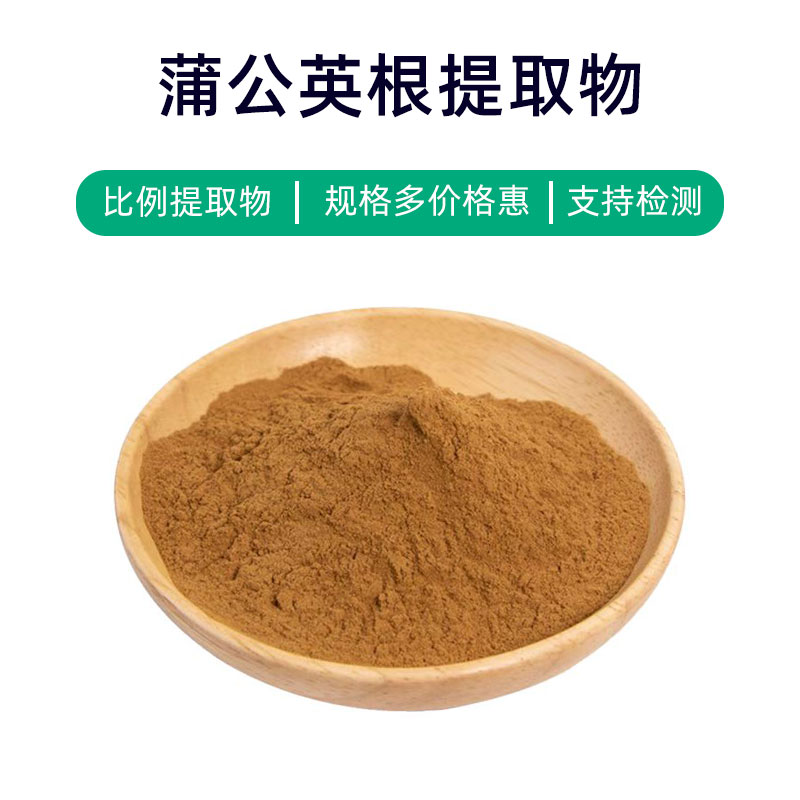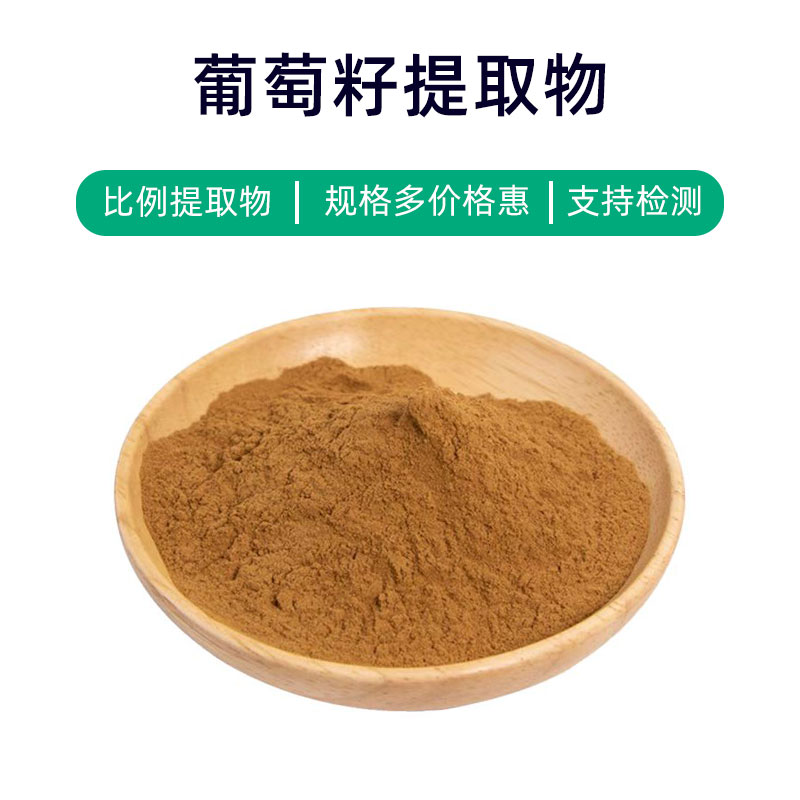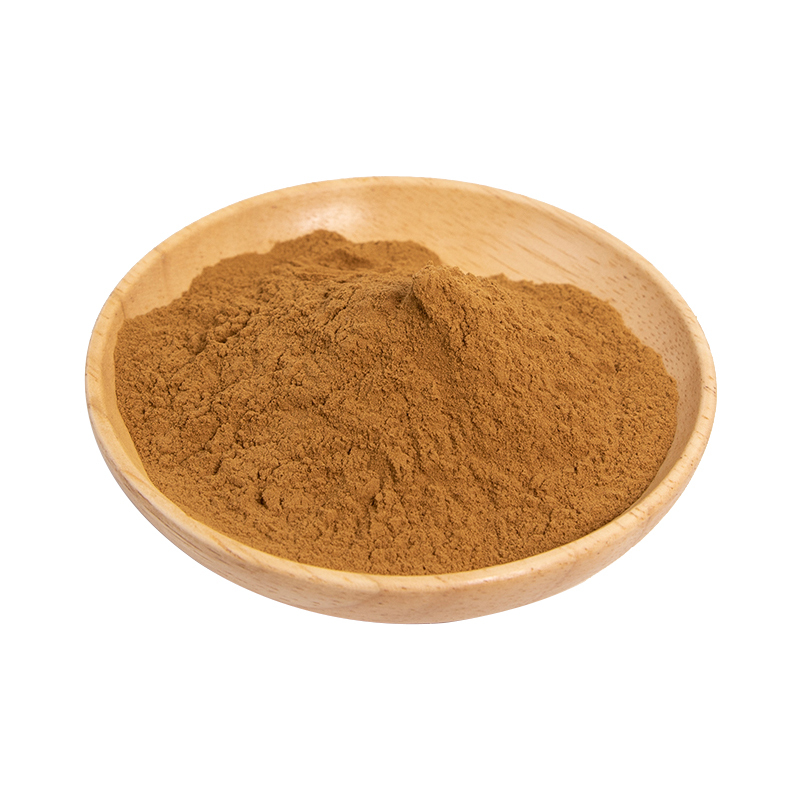Product Introduction for Bindweed Extract
Bindweed extract is a natural plant extract derived from the Bindweed plant, primarily featuring saponins, alkaloids, and polyphenolic compounds. These components provide bindweed extract with multiple biological activities and benefits.
Bindweed extract has a broad application in the pharmaceutical field, being recognized for its antioxidant, anti-inflammatory, and antibacterial properties, making it suitable for the preparation of various health supplements and medications. Research indicates that bindweed extract may offer potential benefits in the treatment of certain chronic diseases, though specific effects require further investigation.
Additionally, bindweed extract is often utilized in cosmetics and skincare products. It is effective for skin conditioning, soothing discomfort, and reducing inflammation, making it suitable for creams, lotions, masks, and other skincare products, meeting consumer demand for natural and gentle skincare options.
Overall, bindweed extract, as a natural plant extract, has promising applications in both the pharmaceutical and cosmetic fields, providing a reliable foundation for the development and production of various products due to its diverse biological activities.
Production Process for Bindweed Extract
The production process for bindweed extract generally involves the following steps:
- Raw Material Collection and Selection: Fresh bindweed plants are selected as extraction materials, typically harvested during the plant's peak growing season. After collection, the bindweed plants are screened to remove impurities and unsuitable parts.
- Grinding and Crushing: The selected bindweed plants are ground and crushed to increase extraction efficiency and surface area, usually processed using grinders or mills.
- Solvent Extraction: The ground bindweed plants are treated with an appropriate solvent (such as water or ethanol) to allow the active components to dissolve into the solvent. The extraction time and temperature must be controlled based on practical circumstances.
- Filtration of the Extract: The extracted mixture is filtered to remove plant residues and solid impurities, resulting in a clear extract solution.
- Concentration and Solvent Removal: The extract solution is concentrated, typically using low-temperature or vacuum concentration methods. During this process, temperature and pressure must be controlled to prevent the loss of active components. Next, solvent removal is conducted to eliminate residual solvents.
- Drying and Grinding: The concentrated extract undergoes drying to remove moisture and yield a solid product. Temperature and humidity must be controlled during drying to prevent loss of active ingredients. Finally, the dried product is ground to obtain the desired particle size.
- Quality Inspection and Packaging: The extract undergoes quality inspection to ensure the content of active ingredients, microbiological quality, and heavy metals meet standards. Once qualified, the extract is packaged, usually in sealed containers, to prevent moisture and oxygen intrusion, ensuring product quality and stability.
The above describes the general production workflow for bindweed extract; specific operational steps and parameters may vary depending on the manufacturer's processes and equipment.
Efficacy and Side Effects of Bindweed Extract
As a plant extract, bindweed extract possesses various benefits and functions, primarily including:
- Anti-inflammatory Effects: Bindweed extract contains multiple bioactive components, such as flavonoids and alkaloids, exhibiting significant anti-inflammatory properties to inhibit inflammatory responses and alleviate symptoms.
- Antioxidant Effects: Rich in antioxidants like polyphenols and vitamin C, bindweed extract helps neutralize free radicals in the body, protecting cells from oxidative damage and slowing down aging.
- Diuretic Effects: Bindweed extract is widely used in diuretics, promoting urine excretion, helping to eliminate excess water and metabolic waste from the body, alleviating edema and weight.
- Digestive Improvement: Bindweed extract may enhance digestive function by increasing gastrointestinal motility and promoting digestive fluid secretion, improving issues like indigestion and bloating.
- Antimicrobial Effects: The active components in bindweed extract have certain antimicrobial properties, inhibiting some bacteria and fungi, useful for preventing and treating skin infections and inflammation.
- Blood Sugar Regulation: Some studies suggest bindweed extract may help lower blood sugar levels, promoting insulin secretion and utilization, contributing to blood sugar control.
Generally, bindweed extract is considered to have a high safety profile for use, but certain precautions should still be observed:
- Individual Allergies: Some individuals may have allergic reactions to certain components in bindweed extract; skin sensitivity tests are advisable before use.
- Dosage Control: When using bindweed extract, follow dosage guidelines provided in the instructions or by a healthcare professional to avoid adverse reactions from excessive use.
- Considerations for Long-term Use: Long-term high-dose use of bindweed extract may put strain on the kidneys and liver, hence continuous long-term usage is not recommended without breaks or medical supervision.
In summary, bindweed extract offers numerous health benefits and functions, but it is essential to use it moderately and adhere to medical advice for safety and efficacy.
Application Scenarios and Dosage of Bindweed Extract
Bindweed extract is extensively applied in the fields of medicine, food, and cosmetics; here are the key applications and dosage recommendations in these areas:
- Applications in Medicine:
- Antidiarrheal Medications: Bindweed extract is commonly used as an antidiarrheal agent. Typical dosages are 2-4 grams orally per dose, 2-3 times per day.
- Diuretics: Due to its clear diuretic effects, bindweed extract is suitable for treating symptoms like edema and high blood pressure. Dosage is generally 2-4 grams orally per dose, 2-3 times daily.
- Digestive System Issues: It can be used as a digestive aid to alleviate symptoms like indigestion and bloating. Recommended dosage is 2-4 grams orally per dose, 2-3 times per day.
- Applications in Food:
- Health Supplements: Bindweed extract is often included in health foods as a natural ingredient with antioxidant, anti-inflammatory, and blood sugar-regulating functions.
- Tea Beverages: It may also be added to tea beverages, providing cooling and diuretic effects.
- Applications in Cosmetics:
- Skincare Products: With its antioxidant and anti-inflammatory properties, bindweed extract can be incorporated into skincare products to help combat free radical damage and reduce skin inflammation.
- Cleansing Products: It can be added to facial cleansers and creams, providing pore-cleansing and soothing benefits.
Dosages for bindweed extract may vary based on product types and formulations; generally, the following dosage guidelines are advised:
- Oral Dosage: Typical dosage is 2-4 grams per intake, 2-3 times daily, but specific dosages can be adjusted according to medical advice or product instructions.
- Topical Dosage: For topical products, apply an appropriate amount to the targeted area after cleansing the skin, gently massaging until absorbed.
When using binds weed extract, avoid exceeding recommended dosages, particularly for oral intake, and always follow medical guidance or product instructions to avoid adverse effects. For cosmetic use, it's advisable to conduct a skin sensitivity test beforehand and immediately discontinue if any discomfort occurs.
Introduction to the Source Plant of Bindweed Extract, Its Distribution, and Growth Environment
Bindweed, scientifically known as Polygonum aviculare L., belongs to the buckwheat family and is a common perennial herb. Below is an introduction to the plant source of bindweed, its distribution, and growth environment.
- Plant Source:
Bindweed is a prevalent wild herb that spreads widely across the globe, particularly in temperate and subtropical regions. It thrives in grasslands, fields, along roadsides, wastelands, sandy areas, and cultivated lands. The bindweed stems can be upright or creeping, branching out, with leaves that are long oval or ovate, often featuring black spots. - Distribution:
Bindweed is found on all continents, notably in Europe, Asia, Africa, North America, and South America. In China, bindweed primarily grows in regions such as Northeast, North China, Northwest, Southwest, East China, and South China, across elevations from sea level to about 2000 meters. - Growth Environment:
Bindweed prefers sunny locations with moist, well-drained soil. It shows flexibility in soil type, growing in sandy, loamy, and clayey soils but is not well-suited to overly dry or excessively wet conditions. Bindweed is drought-resistant and cold-tolerant, having a long growth period; under suitable environmental conditions, it can grow year-round. Its adaptability to soil pH is strong, thriving in both acidic and alkaline soils.
This plant exhibits significant adaptability and vitality, often appearing in various ecological environments as a common weed. Because of its widespread growth and strong environmental adaptability, bindweed has been extensively observed and studied in different regions and countries.
Processing and Storage of Bindweed Extract
The processing of bindweed extract typically includes the following steps: First, fresh bindweed plants are collected, followed by cleaning and impurity removal. Next, the plants are crushed and ground into powder or granulated form. Then, extraction is performed using suitable solvents to extract the effective components from the bindweed plants. The final steps include filtration, concentration, and drying to obtain bindweed extract.
For storage, bindweed extract should be kept in a cool, dry, and well-ventilated area, protected from direct sunlight and high temperatures. It should be stored in sealed containers to prevent moisture exposure, ensuring stability and quality. Under appropriate conditions, bindweed extract can be preserved long-term while maintaining the stability and efficacy of its active components.
Monica Sun is a seasoned expert in the plant extraction industry with over a decade of experience in research and production. She specializes in the extraction and purification of plant active ingredients, focusing on driving innovation in natural product applications. Monica has participated in the development of multiple functional plant extracts, delivering high-value natural raw material solutions for the health food, pharmaceutical, and dietary supplement sectors.









